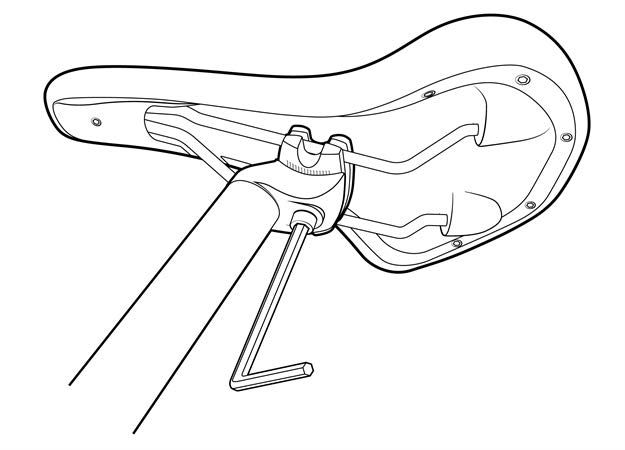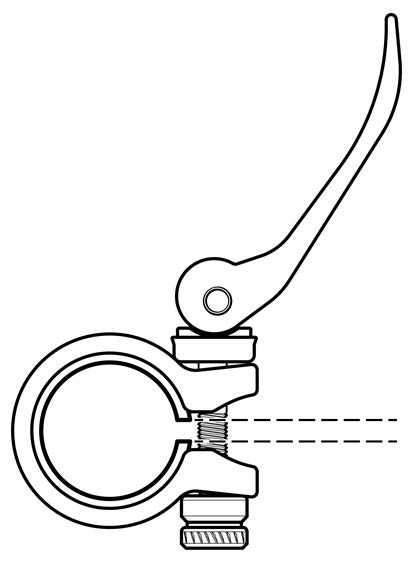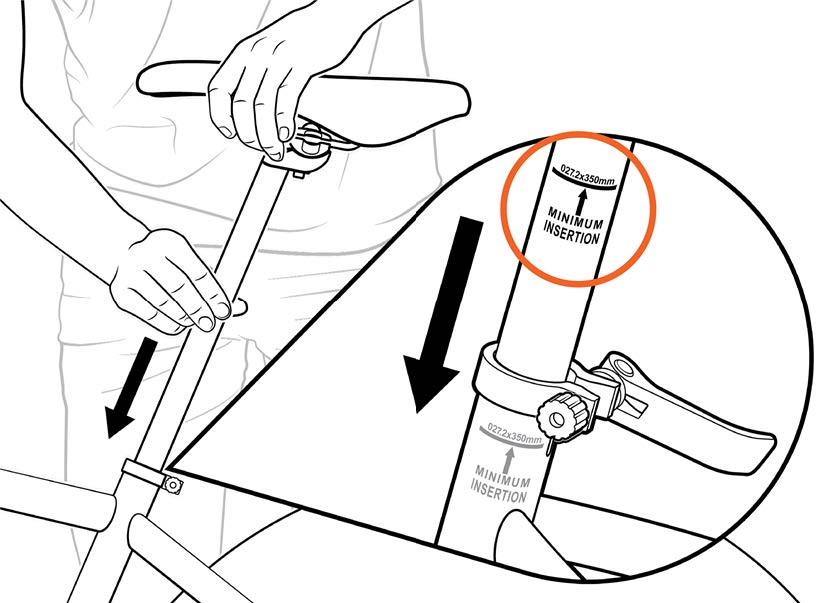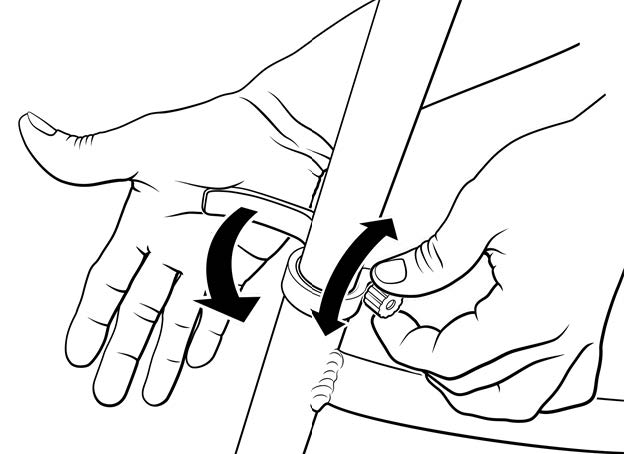Adjust Your Bike for Comfort and Safety
All ebikes by Rad Power Bikes are equipped with an adjustable seatpost, and most models come with an adjustable seat and handlebar. It's important to adjust the bike to the rider's comfort and proportions to ensure a comfortable and safe ride.
Follow the steps below to adjust your bike for comfort and safety. The steps below will work for most models. For detailed information related to your model, click here to download the latest version of your bike's owner's manual or to watch the bike assembly video.
The following steps are critical for your comfort and safety, and must be performed before your first bike ride. We recommend that you consult a bike fitting professional such as a certified, reputable bike mechanic who specializes in bike fit.
Tools needed:
- A set of Allen wrenches ranging from 3-6 mm
- A torque wrench with a set of Allen bits
Notice: Hardware may vary (bolt head style) and/or require different tools. Use the appropriate head size and type of tool for your bolts. Ensure the tool is pressed firmly into the bolt head and turn slowly to prevent stripping.
Click a heading below and follow the steps to adjust your bike.
Adjust the Seat Angle
Many riders prefer the seat to be roughly parallel to the ground, with its horizontal position in the middle of the range marked on the seat rails.
To change the angle and horizontal position of the seat:
- Loosen the seat adjustment bolt beneath the seat. Use an Allen wrench that fits the bolt on your bike. Do not remove the bolt fully.

- Adjust the seat. Move the seat backward or forward and tilt to adjust the angle within the limit markings on the seat rail. Do not exceed the limit markings etched into the seat rail.
- Tighten the seat adjustment bolt. Ensure the top of the seat rail clamp is aligned directly over the bottom of the clamp so that the seat adjustment bolt will clamp the seat rails properly. Then, while holding the seat in the desired position (or having a friend help you hold it in place), use an Allen wrench to tighten the seat adjustment bolt securely to the recommended torque value listed in your owner's manual.
Notice: The stock seat that comes with RadRunner and RadRunner Plus models has a fixed connection between the seatpost and seat, which is therefore not adjustable in the ways described above.
A loose seat clamp or seat adjustment bolt can cause loss of control leading to an accident, bike/property damage, serious injury, or death. Prior to first use, be sure to tighten the seat clamp via the seat adjustment bolt properly. Regularly check to make sure that the seat adjustment bolt is properly tightened and the clamp is secure on the seat rails.
Adjust the Seat Height
An ideal seat height for most riders allows them to be comfortable and get the best pedaling efficiency. When the rider is seated, they should be able to place the ball of their foot on the pedal at its lowest position while their leg is almost fully extended, with the knee slightly bent. The seat should never be so high that the rider must fully straighten their legs or rock their hips from side to side while pedaling to reach the bottom of the pedal stroke.
Depending on a rider’s preference, ability, and amount of experience with bike and ebike riding, lowering the seat so the rider can put one or both feet on the ground without dismounting from the seat may offer a safer and more comfortable experience while operating the bike.
To adjust the seat height:
- Open the seatpost quick release lever. Align the seatpost clamp with the notch in the seat tube, as shown in the top-down view of the seatpost clamp below.

- Adjust the seatpost height. Slide the seatpost in or out of the seat tube to a height appropriate for your leg length and preference. Do not extend the seatpost beyond the minimum insertion marking etched onto the seatpost.
Overextending the seatpost can cause it to break or fall off your bike, which will put you at very high risk of serious injury or death. Avoid this danger by inserting your seatpost into the seat tube far enough that the minimum insertion point is no longer visible.

- Adjust the seatpost clamp quick release lever. With the lever open, adjust the lever tension by turning the adjustment nut opposite the quick release lever. Test the lever to ensure it has enough tension, and adjust tension if needed.

- Close the quick release lever fully. This should require enough pressure that it leaves an imprint in your hand. When closed, the seat should not move up, down, left, or right. Repeat step 3 to add more tension if needed. The clamp keeps the seatpost secure and should be very tightly closed.
- Try out your seat fit. Repeat steps 1–4 to adjust the seatpost further, if needed.
Fine-tune the Handlebar and Brake Lever Positioning
Most riders will be comfortable with the handlebar angled so that the handlebar grips and brake levers are roughly parallel with the ground. Others may have a preference for the handlebar grips and brake levers to be angled slightly downward. Regardless of your preference, always make sure you can easily squeeze the brake levers whenever needed while riding.
To adjust the angle of the handlebar:
- Locate and loosen (but don't remove) the stem faceplate bolts.
- Adjust the angle of the handlebar to a comfortable level and position, making sure to stay within the markings on the handlebar, if applicable. Ensure the handlebar is centered on the stem and the display is easily accessible to the rider. Hold the handlebar in place.
- Tighten the stem faceplate bolts evenly 1/4 turn at a time, in an "X" pattern. Torque the bolts to the recommended value listed in your owner's manual.
To adjust the angle of the brake levers:
- Locate and loosen (but don't remove) the brake lever clamp bolt on the underside of the brake lever.
- Adjust the angle of the brake lever and ensure the lever is easily accessible to the rider. Hold the brake lever in place.
- Tighten the brake lever clamp bolt. Torque the bolt to the recommended value listed in your owner's manual.
- Repeat steps 1-3 with the other brake lever.
- Turn the handlebar from side to side to ensure there is enough cable slack. The handlebar should turn fully to each side without pulling cables taut.
Ensure all hardware is tightened properly according to the values in your owner's manual. This is a critical safety step that you must not skip. If you do not own a torque wrench or don’t have the skills to check the tightness of your hardware, consult a local, certified, reputable bike mechanic for help.
